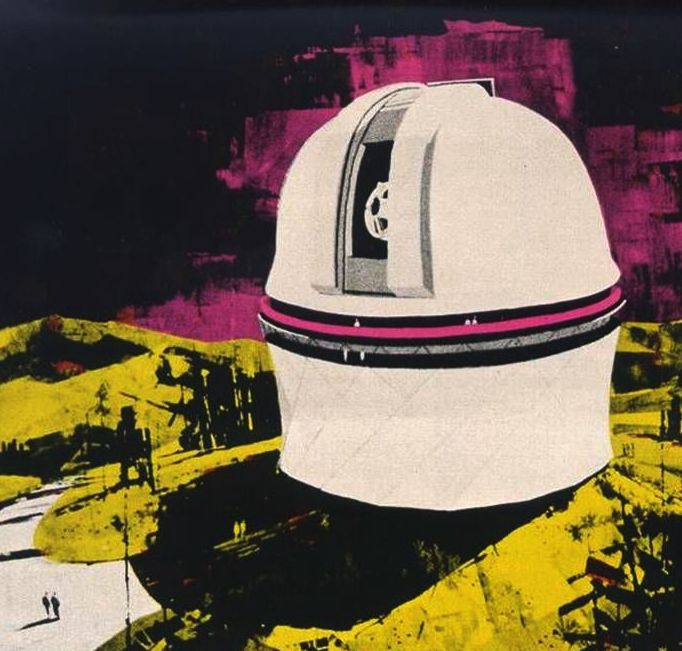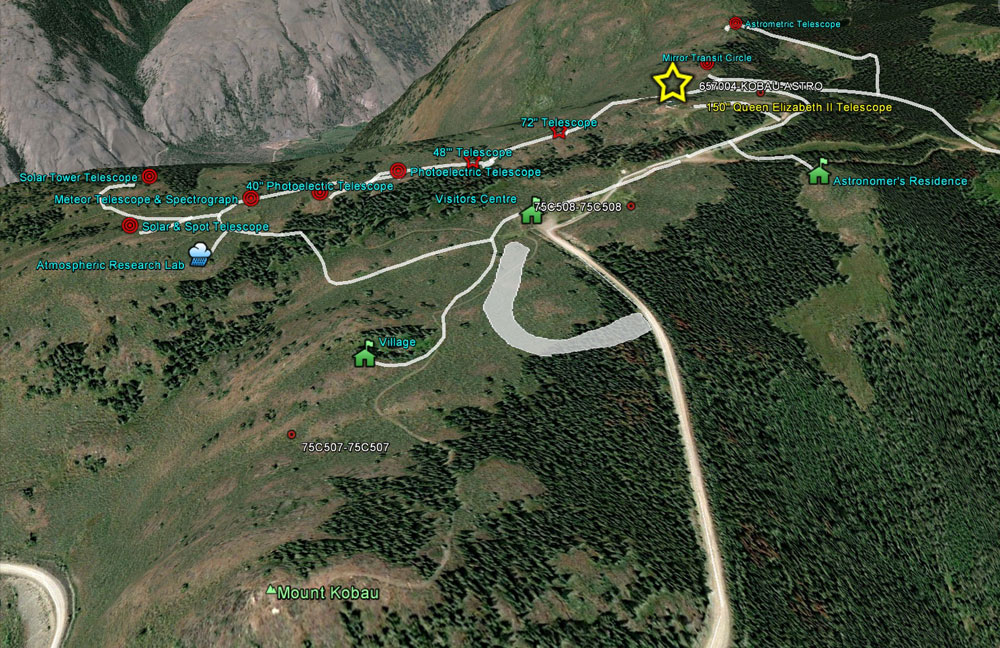
Long before an observatory on Mt. Kobau was contemplated, Canadians were among the world’s leaders in visual astronomy. In 1910, a proposal for a 72” telescope came within a whisker of giving our young country the world’s largest telescope.
Delayed becoming operational, the Plaskett Telescope at the Dominion Astrophysical Observatory in Victoria was relegated to second place when the 100” Hooker reflector saw first light on California’s Mt. Wilson in 1917. Within two generations, Canadian telescopes were out of the top ten.
Canada’s astronomers eagerly sought approval for an instrument that would assist them, once again, to the leading edge of astronomical investigation. Appropriately, it was the director of the Dominion Astrophysical Observatory who commissioned a survey of potential domestic sites for a world-class telescope.
Climatological and atmospheric tests pinpointed several excellent prospects: dark, accessible locations favored with a large proportion of clear nights, transparent skies, and fine seeing. From the short list, an obscure 1890-metre peak in British Columbia’s semi-arid southern interior emerged as the leading contender. On October 28, 1964, Prime Minister Lester Pearson, made it official: Mt. Kobau was to be the site of Canada’s new National Observatory.
The centerpiece of the planned Kobau complex was a 12-storey dome housing a telescope with a 157″ diameter mirror. The instrument would be the second largest on the planet, surpassed only by California’s famous Hale Reflector on Palomar Mountain. Kobau’s giant eye was dubbed the Queen Elizabeth II Telescope, commemorating Her Majesty’s 1964 visit to Canada. Support buildings, dormitories, several smaller telescopes, and a futuristic visitor’s centre (complete with planetarium and museum) rounded out plans for the mountain-top community. Mt. Kobau seemed destined to take its place among the major observatories of the world.
But as Corning’s giant fused-silica mirror blank cooled and crews blasted a road to the Mt. Kobau summit, dissension split Canadian astronomers. As good as the Kobau site was, it could not match developing locations at exotic sites in the tropics.
If Canada acted quickly, she could join European and American astronomers with a foothold in the Chilean Andes. On the other hand, starting from scratch in distant South America would be costly, and difficult to justify with the Kobau project well underway. Besides, was it not crucial to build Canada’s observatory at a domestic site for maximum access by her own aspiring graduate students? With astronomers unable to provide united direction, politicians pulled the plug. The Mt. Kobau Observatory project was canceled as part of federal spending cutbacks, on August 29, 1968.
Kobau’s supporters among Canadian astronomers tried for years to resurrect a scaled-back project, to no avail. The lone active instrument on the mountain, a 16″ telescope originally erected for site-testing, was removed in 1981. The giant mirror for the QEII telescope sat unfinished and unused for two decades. Sold at last around 1986, it is believed to have been melted and recycled.
Today, amateur observers from across North America – and beyond – keep the mountain’s astronomical heritage alive. For one week each summer, young and old gather amid firs and sagebrush at the site of the proposed observatory to explore the wonders of Kobau’s dark, calm skies.
– Jim Failes

